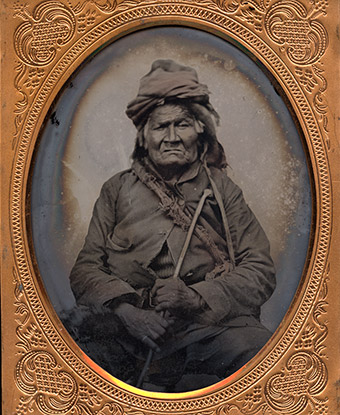Last updated: August 31, 2020
Person
Chief Okemos

Courtesy Archives of Michigan
Chief Okemos was born around 1769 at the Indian settlement, Ketchewandaugoning near Knaggs Crossing on the Shiawassee River. His totem was the bear.
In 1811, he fought in the battle of Tippencanoe, Indiana. He then joined the British Forces with a colonel’s commission to fight in the War of 1812. In 1813, he was a leader at the Battle of Sandusky. Later that year he participated in the Siege of Meigs in Northeastern Ohio. October 5, 1813, the Battle of the Thames was his last battle. He was a Prisoner of War pardoned by Territorial Governor Lewis Cass.
In the spring of 1814, he and some other chiefs presented themselves at Fort Wayne, Detroit, Michigan. Chief Okemos stated that he was done fighting, with the white man. He kept this promise faithfully.
Okemos signed the Treaty with the Wyandot, Etc., 1815, Treaty with the Wyandot, Etc., 1817, Treaty with the Chippewa 1819 and Treaty with the Chippewa 1837. On these treaties there were several spellings of his name Okemans, Ogimaus, Okemos, O-ge-mah, and O-Gee-Manse. Okemos was a Saginaw Chippewa Chief of his people.
Okemos married Waindegoquayzance sometime before 1818. Okemos children include John (Paymechewaysawdung) born in 1829, died in 1899, James (Waygeshegome) born in 1845, died in 1902, (aka-Jackson Ogemos, Jim Jackson and James Okemos) and a daughter Kawbaishcawmoquay born in 1845, died in 1896, there was also a daughter Shawusquahbenoquay who died in 1852.
Many tales and stories are recalled about Chief Okemos, by the locals. We remember him as a man who outlived and survived all the misfortune of the times.
Okemos died December 5, 1858, five miles northeast of Dewitt by the Looking Glass River. Okemos was a great Saginaw Chippewa Chief and served his people well, in battle and in diplomacy. His body rests at Shimnicon on the Grand River in Ionia Co, Michigan.
